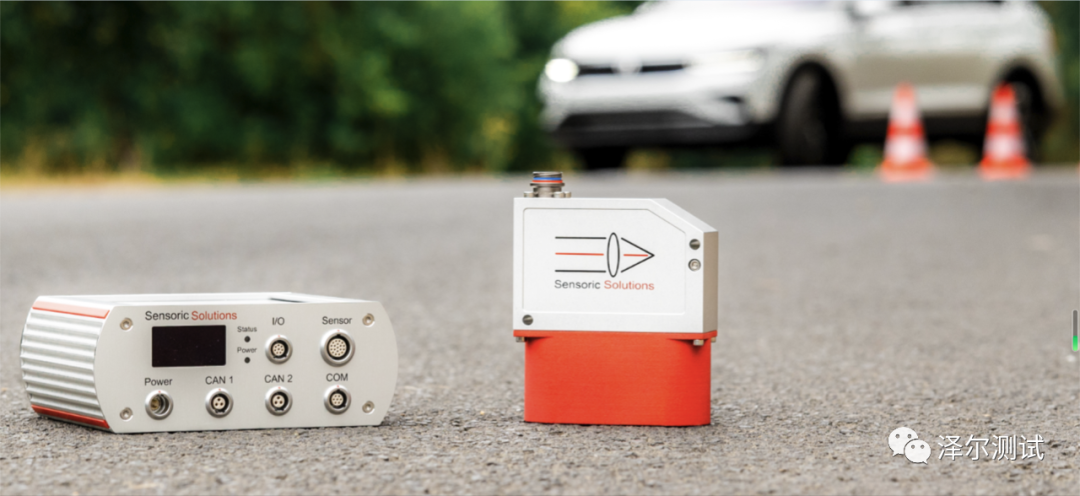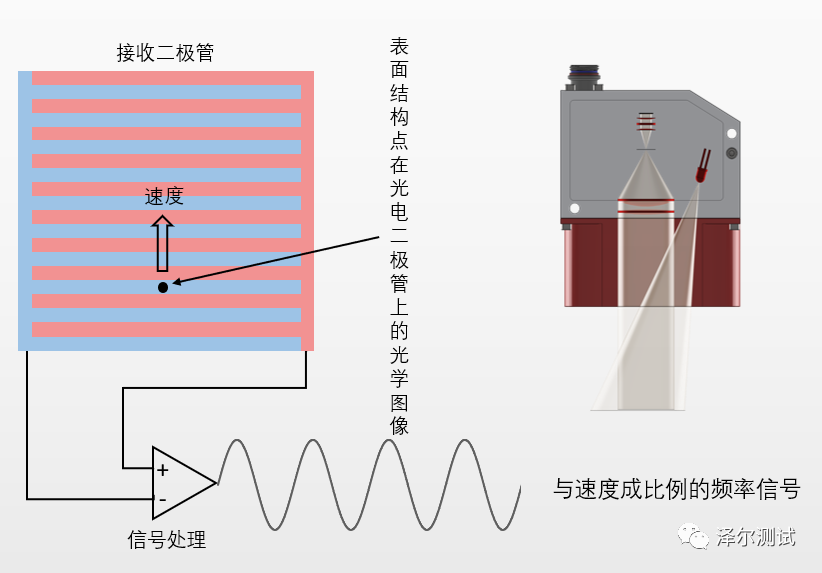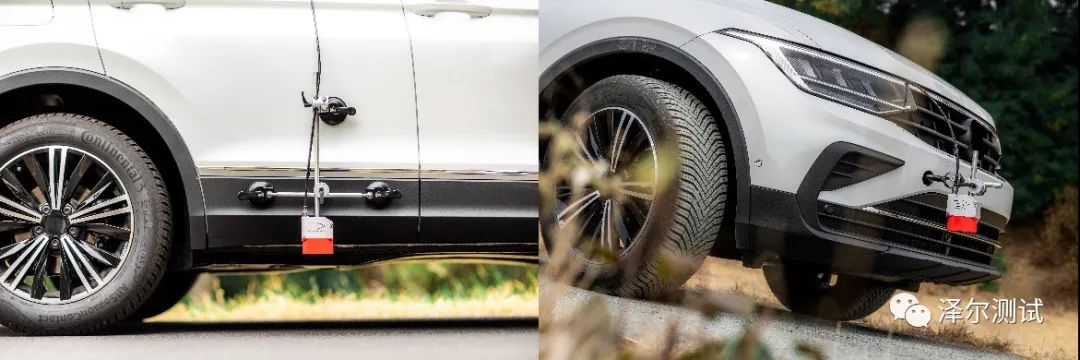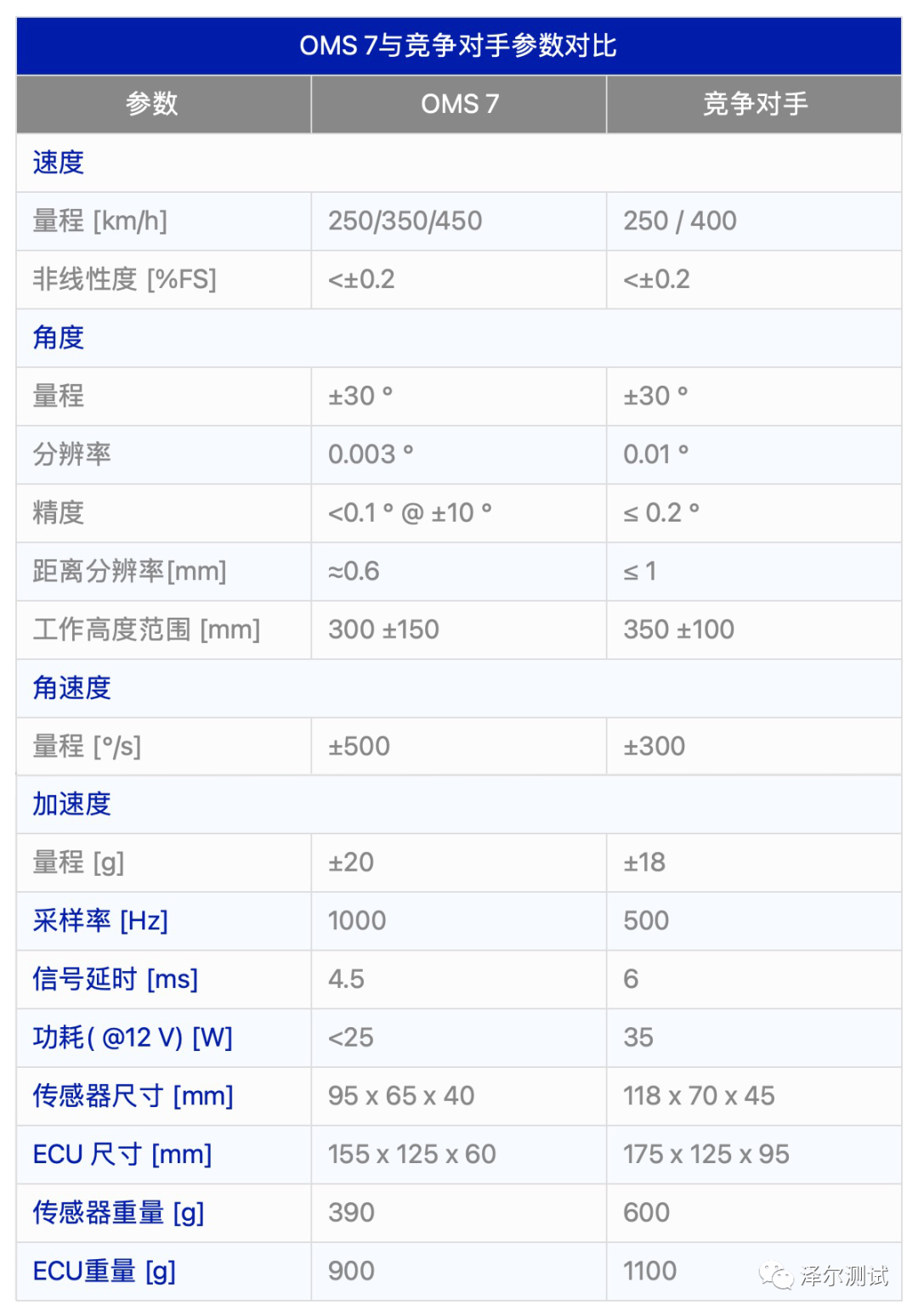OMS 7 Optical Speed Sensor - Start Testing Anytime, Anywhere
1、 Overview
GPS speed measurement has become the preferred solution in the field of automotive speed measurement due to its compact and compact equipment, easy installation and operation, and accurate measurement data. As the name suggests, GPS speed measurement relies on the received GPS satellite signals to calculate related parameters such as speed. However, with the diversification of car testing scenarios, such as the need to conduct indoor tests in garages, tunnels, and open roads densely covered with buildings, GPS speed measurement becomes inadequate due to factors such as satellite signals being obstructed or interfered with.
In order to address the limitations of GPS speed measurement on the field of use, Zell has brought a new optical speed sensor, OMS 7, from Sensoric solution in Germany. This sensor combines non-contact optical sensor technology with inertial measurement technology to provide users with a wide range of accurate measurement values for vehicle dynamic testing, solving the problem of inaccurate test data caused by GPS satellite signals being blocked or interfered with Unstable situations can easily cover almost all testing sites.

2、 Advanced technological advantages
It is generally believed that optical sensors have long-term stability, and the signal does not drift over time, but may be affected by ground conditions and cause optical interference; IMU can measure the dynamic characteristics of vehicles more comprehensively, but its data will drift over time.
Sensoric solution's OMS 7 cleverly combines two measurement methods, with optical sensors and IMUs correcting each other's measurement data, improving measurement accuracy and enhancing data credibility. OMS 7 greatly improves the quality of measurement data through the strategy of "sensor fusion", ensuring flawless testing signal quality on wet, sandy, snowy, or various other road surfaces.
When the OMS 7 of the optical sensor operates, the structural points on the test surface (ground) are imaged with the help of optical devices on the grating shaped receiving diode. When the vehicle moves, the imaging of these structural points will change and generate a signal, with its main frequency component proportional to the speed, thus enabling direct measurement of the vehicle's velocity and slip angle relative to the ground.

The main features of OMS 7 optical sensors are:
Measurement of vehicle body and tire slip angle;
Two axial velocity measurement;
Triaxial acceleration measurement;
Triaxial angular velocity measurement;
Non contact direct measurement of velocity and slip angle;
Supports up to 1 kHz sampling rate;
300 mm+/-150 mm working range;
UPS anti voltage drop protection;
The results can be corrected to any point of interest;
Working status display screen;
Various installation fixtures for suction cups, magnets, and trailer hooks;
The orientation of the wiring harness connector is optional.

3、 Excellent performance parameters
Optical sensors have very high requirements for optical components and algorithms, so there are not many suppliers of automotive dynamic testing equipment that can independently develop and produce optical speed sensors. As an emerging force in this field, the confidence of OMS 7 to become a troublemaker in the industry is evident in its comparison with industry leaders.

4、 Choose OMS 7, choose Advanced
Sensoric solution's OMS 7 optical sensor, while drawing on the advantages of similar products on the market, has made innovative improvements to existing products and customer pain points during use, such as lighter sensors and ECUs, better measurement accuracy, higher sampling frequency, lower device power consumption, wider sensor operating range, and more intuitive working status display The safer power outage protection function reflects the advanced design of OMS 7 and its care for customer experience.
Choose OMS 7, choose advanced within reach! Want to learn more?
https://www.sensoric-solutions.com/